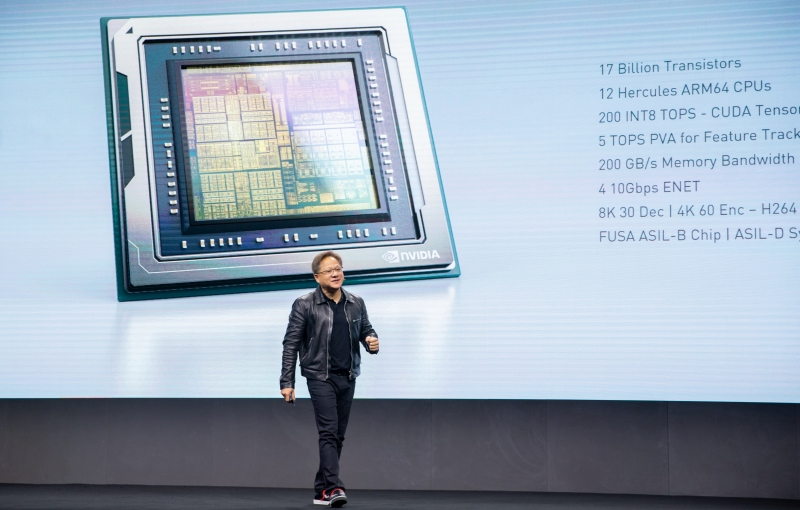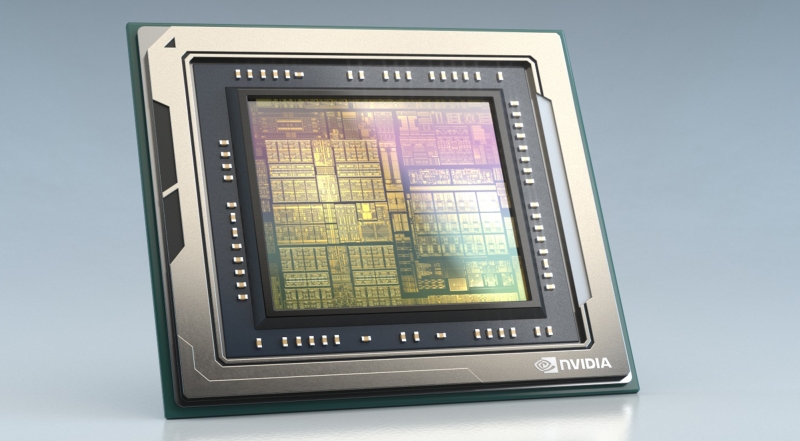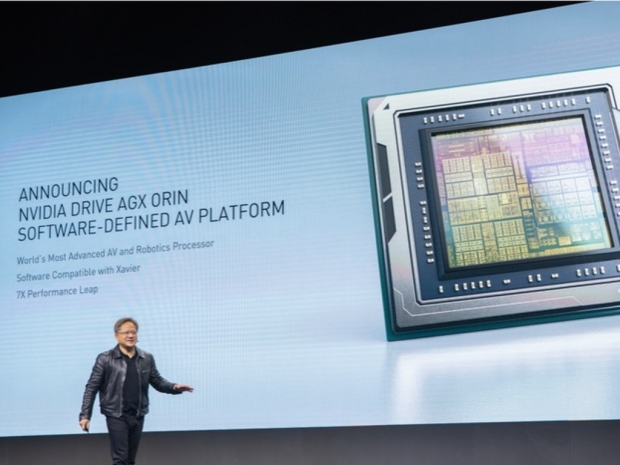The Orin SoC is a 17 billion transistor chip, which is almost double the number of transistors compared to the Xavier SoC. It features a total of 12 ARM Hercules Cores, which is a big surprise considering Nvidia has used a custom ARM cores for its previous automotive-oriented SoCs. The ARM Hercules cores will succeed currently available Cortex-A77 cores and should cover both 7nm and 5nm manufacturing processes in 2020 and onward, according to previously published Arm client CPU roadmap.
In addition to ARM Hercules cores, Nvidia Orin SoC will also pack next-generation Nvidia GPU. Unfortunately, Nvidia was not keen on revealing any precise details regarding the GPU but did say that the platform will deliver 200 INT8 TOPS performance with CUDA Tensor Core GPU and NVIDIA’s Deep Learning Accelerator (DLA), which is nearly 7x the performance of the Xavier SoC. It will also offer 200 GB/s of memory bandwidth, 4 100Gbps Ethernet for sensors and in-vehicle communication.

According to Nvidia, the Drive AGX Orin platform will be able to scale from a Level 2 to Level 5 (self-driving) autonomy systems.
“Creating a safe autonomous vehicle is perhaps society’s greatest computing challenge,” said Jensen Huang, founder and CEO of NVIDIA. “The amount of investment required to deliver autonomous vehicles has grown exponentially, and the complexity of the task requires a scalable, programmable, software-defined AI platform like Orin.”
Nvidia noted that the DRIVE AGX Orin family will include a range of configurations based on a single architecture and should be available for cars in 2022.





